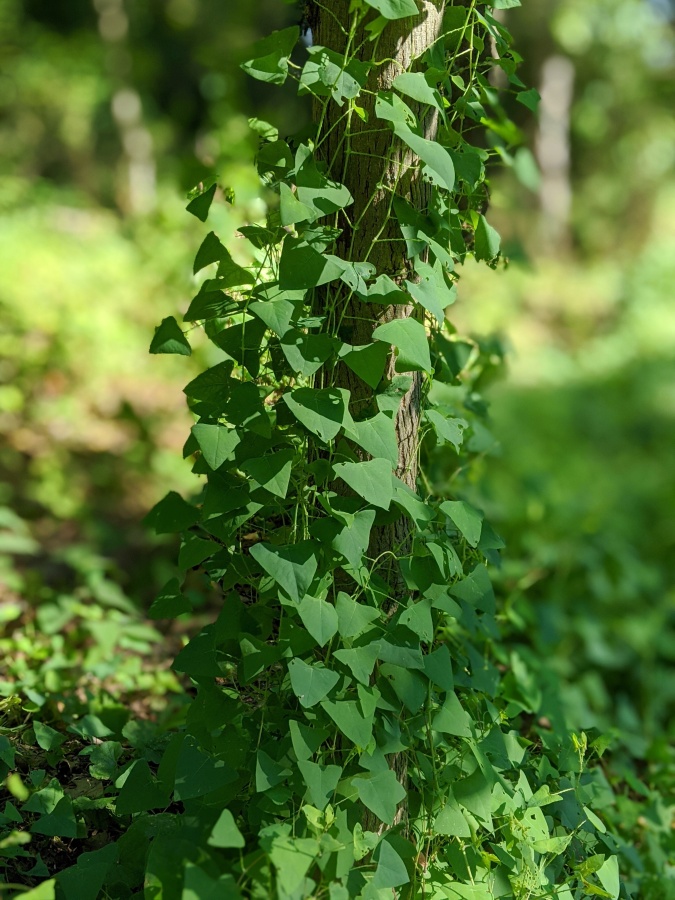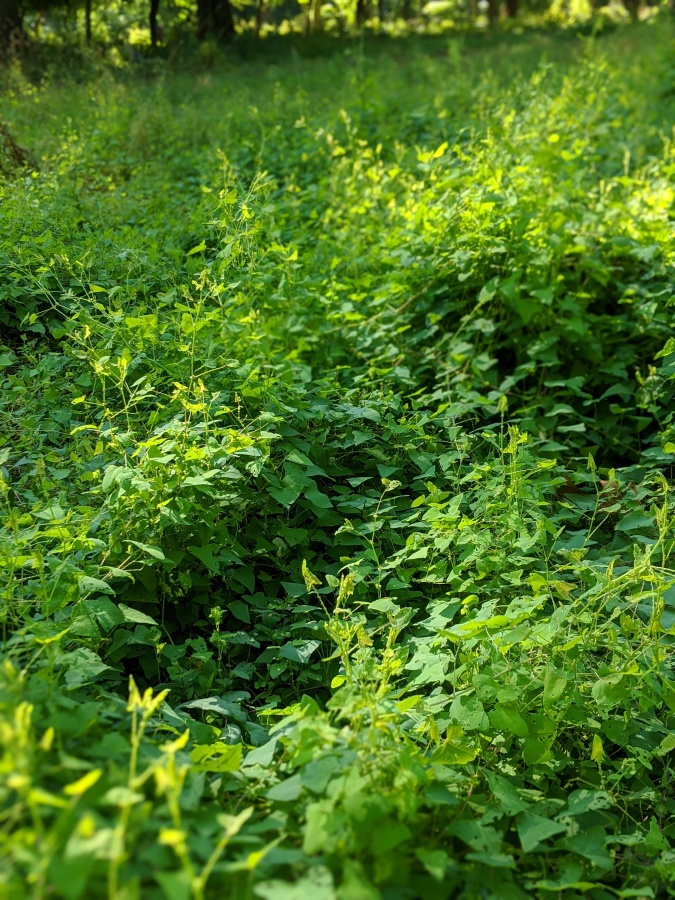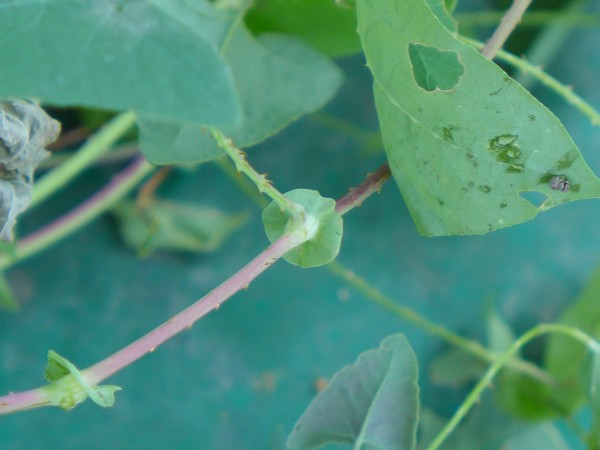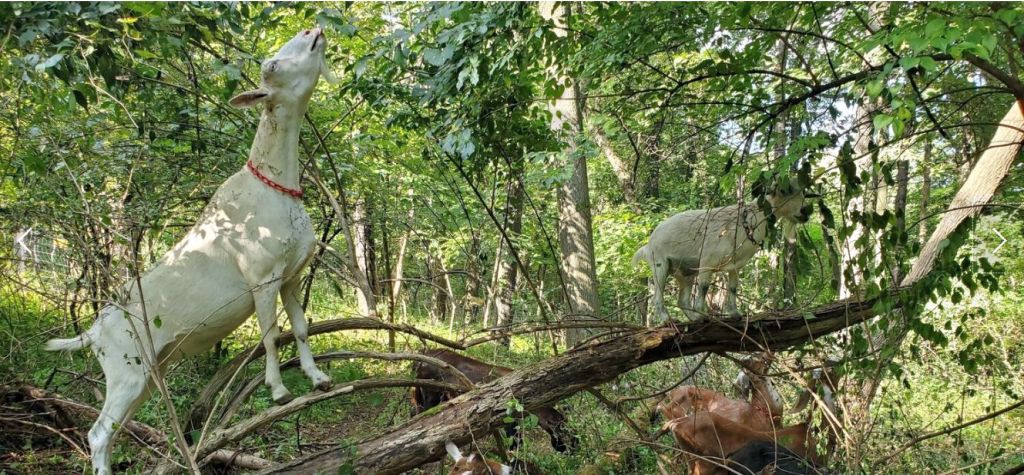
If you’ve been to Frick Park’s Clayton Hill lately you’ve seen a plant blanketing the open area down east of Clayton Hill Loop. Invasive mile-a-minute (Persicaria perfoliata) was thick on the ground and climbing every upright when I took these photos in July.

Even if I wanted to walk through this area I wouldn’t. The plant has thorns.

Invasive plants are discouraging but I have hope they’ll be gone some day. The Allegheny Bird Conservation Alliance (ABCA) is conducting a multi-year project to remove invasive plants from Frick Park.
ABCA partners — Pittsburgh Parks Conservancy, Carnegie Museum of Natural History, and Western Pennsylvania Conservancy — are working with Allegheny GoatScape to remove invasive plants like bush honeysuckle (Lonicera spp.) from Frick Park at Clayton Hill to restore native forest habitat for birds and other wildlife. Goats will be “working” areas around Clayton Hill during summer and fall 2020 and again in 2021.
— ABCA Ongoing Projects
The restoration area is shown on the ABCA map below.

What’s hard for us to do by hand is easy for Allegheny Goatscape’s goats. They eat anything. Here’s how it works.
Prior to bringing the goats, Allegheny GoatScape clears a fence line and sets up the fencing and a shelter for the animals. The herd arrives at the site and immediately goes to work eating the vegetation. … Once the goats eat through the vegetation on site, they are transported to their next [assignment] location.
— Allegheny Goatscape: How It Works

I haven’t seen goats at Frick but the fenced area at Clayton East looks like goats have been inside it. There’s a lot less mile-a-minute inside the fence.
Now that the goat project is underway ABCA wants to know how the birds respond and is asking birders to count birds in the four restoration zones per hotspot in eBird. Observations are especially needed during August and September fall migration.
Let’s see how goats have helped the birds. Find out more, including the eBird hotspots names, at Allegheny Bird Conservation Alliance: Ongoing Projects.
Bring on the goats!
(Mile-a-minute photos by Kate St. John. Goat photo from Allegheny Goatscape. map from ABCA)
The goats are really neat. Unfortunately, the result is temporary. Pitt cleared some hillsides in the upper campus with goats last year. They eat the vegetation but that does not kill the invasive vines (or bring back to life the trees that succumbed to the invasion). A few weeks after the goats left, the invasives took over everything again.
After invasives are removed, we need to spray them to kill them off and replant the area with natives. Spraying kills the invasives root systems which goats can’t get to. If you don’t spray, the invasives just come back…in some cases, even stronger.
Tallahassee, Florida brought sheep in to eat kudzu (which grow s a foot a day) in 2000.
In 2003, an AP article reported that rustlers had stolen 21 of the sheep (owned by a New Hampshire company). The article also included the following:
“When the city of Tallahassee started its sheep program three years ago, about 300 sheep grazed out 60 acres of kudzu. Now the flock numbers 1,200 and can eat up 200 acres annually, city parks director Larry Schenk said. The annual cost is $150,000.
The herd is stationed all over the city and county in flocks of 60 to 300. They’re guarded by an easy-to-install electric fence and, sometimes, a guard dog. ”
I haven’t seen or heard anything about the sheep in years. Hope Pittsburgh’s goats work out!
Goats are the best landscapers available haha. We use them to maintain our property in Maine also, I’ll have to ask the birds if it has improved their experience of the property haha. I appreciate the article!